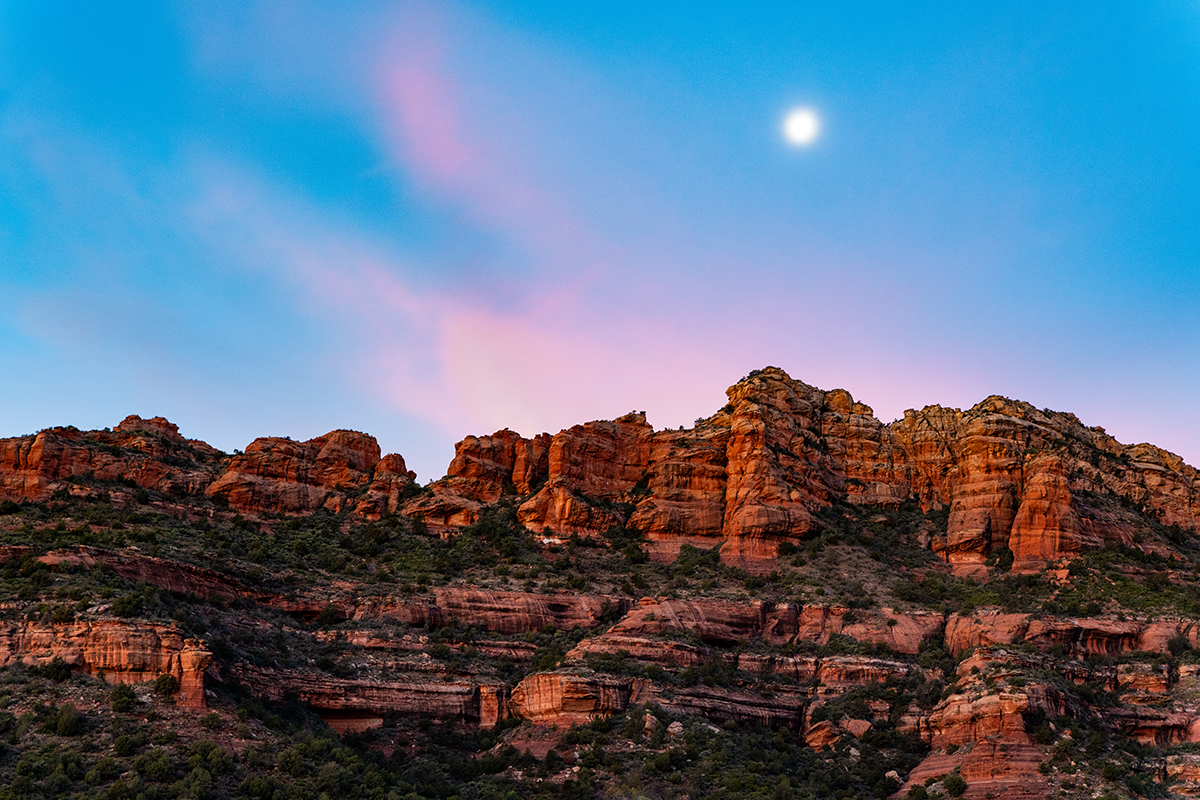Balancing Act
Searching for visual anchors, changing light, and even a sunburst or two are key to Dino Sokocevic’s landscape photos with the Tamron SP 24-70mm F2.8 G2 zoom.
Share the article:
More Photo Tips | Video Gallery | Photo Gallery | Enewsletter sign-up
By Jenn Gidman
Images by Dino Sokocevic
Dino Sokocevic is so enamored with Mother Nature that he’ll often grab whoever’s up for an adventure—friends, fiancee, parents—and include them on his forays deep into some of the American Southwest’s most scenic landscapes. The Utah photographer didn’t slow down this past fall and winter, visiting the red rocks of Arizona’s Sedona and California’s Joshua Tree National Park, as well as closer to home amid the breathtaking beauty of Moab.
“Landscape photography isn’t just a creative pursuit for me,” Dino says. “It’s a way for me to escape from the workweek and the daily grind. To be able to head outside and concentrate on creating the most compelling compositions helps me relax and discover new destinations.”
At the heart of Dino’s road trips lies the Tamron SP 24-70mm F/2.8 Di VC USD G2 zoom lens, a versatile lens that effortlessly transitions from wide-angle vistas to intimate portraits of nature. “I’m able to get so creative with this lens on my camera, even if it’s the only lens I bring,” he says. “I mostly shoot handheld, unless I’m doing a long exposure, so the Vibration Compensation (VC) feature is invaluable, and the F2.8 maximum aperture is necessary in low-light situations. Typically, however, for landscapes, my sweet spot in terms of aperture tends to hover around F8 or F11, which with the 24-70mm G2 means I’m going to get tack-sharp images with minimal diffraction.”
DINO’S QUICK TIPS
Use multiple elements to create layers.
This river scene is one of my favorites when heading into Moab. You can see the sandstone Fisher Towers in the background. I organized the various elements in the photo to form different layers, with the rock in the foreground and then the dividing line of the river, which in turn serves as a leading line to move the eye back toward the Fisher Towers.
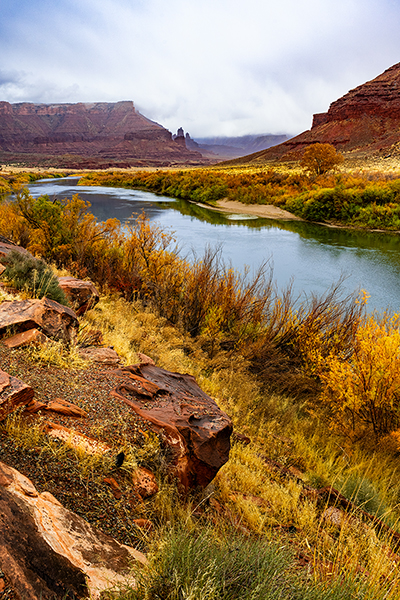
24-70mm (26mm), F9, 1/60 sec., ISO 400
Click image to view larger
Use snow as a reflector.
My fiancee and I were driving to Arches National Park before dawn, in the darkness, and everything in the dim light looked weird and sandy, like white noise. As the sun started to rise, I realized that white noise was snow. Even though you need to be careful of contrast with the sun beating down on all that white, the snow also serves as a big reflector, bouncing that light right back onto the rock formations.
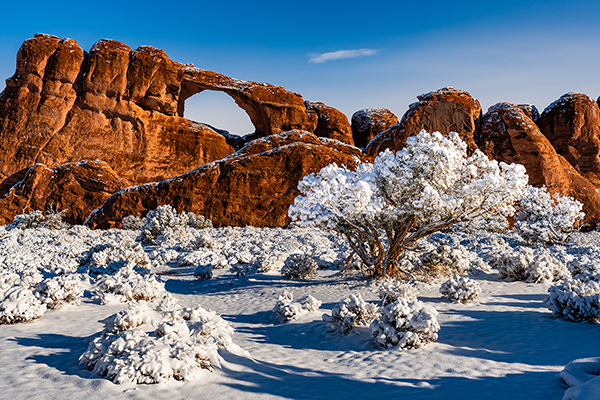
24-70mm (40mm), F9, 1/320 sec., ISO 64
Click image to view larger
Seek anchors, and balance.
In Joshua Tree National Park, there are infinite compositions you can create, because each tree is unique and boasts its own personality. I don’t usually prefer to shoot with clear, cloudless skies, but in this case near Hidden Valley, I loved the subtle bands of color in the sky, evolving from purple and pink to blue. The tree jutting into the frame, however, was my focal point, with the sky serving as an aesthetically pleasing backdrop.
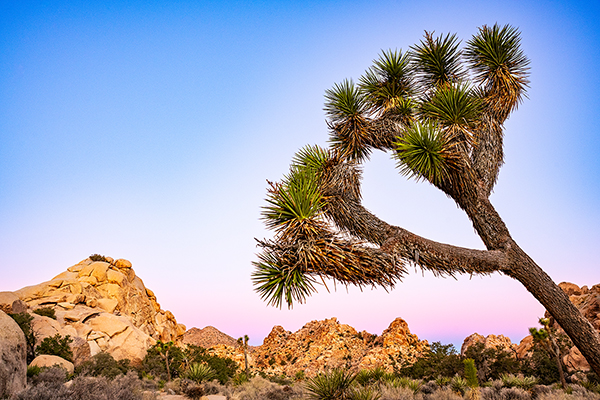
24-70mm (31mm), F7.1, 1/40 sec., ISO 800
Click image to view larger
In the snowy photo in Arches National Park, the arch is my main focal point, but that snow-covered tree leaning to the right served as a secondary anchor to balance things out. If you apply the rule of thirds here and envision two vertical lines stretching through the image, one of those lines crosses right through the arch, while the other crosses through the tree.
Document the power of changing light.
The two photos I took in Sedona were taken just 20 minutes apart one morning. We were trekking to the Subway Cave and the views on the way were gorgeous. I stopped to take some photos of the sky as the sun came up. The sky was hazy, including the moon, which I thought made for an interesting photo.
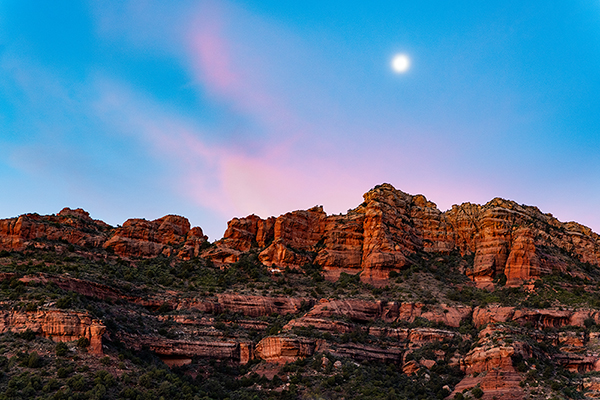
24-70mm (60mm), F5, 1/30 sec., ISO 400
Click image to view larger
Just a few minutes later, I spotted that sandstone formation bathed in the glow of the rising sun. It stood out to me due to the contrast of the shrubbery at the bottom of the image. The sandstone serves as the focal point, but I appreciate the natural framing that was imploring me to raise my camera, compose, and capture.
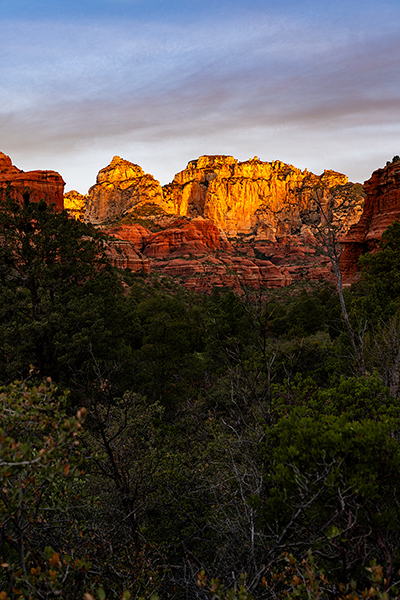
24-70mm (50mm), F6.3, 1/50 sec., ISO 200
Click image to view larger
Prepare for sunbursts.
We were hiking back to our car in Joshua Tree when I spotted this rock pile that reminded me of the Pride Rock from the Lion King. I saw the sun was starting to poke through the yucca plants and knew I had to try to capture a sunburst. The key to creating a sun star like this is to “force” the sun into a pinpoint of light. I strategically positioned myself, then set my aperture to F16. I used HDR bracketing to ensure I didn’t blow out the highlights while still getting some good shadow details. I love how the points of the sunburst mimic the spikes of the yucca plants.
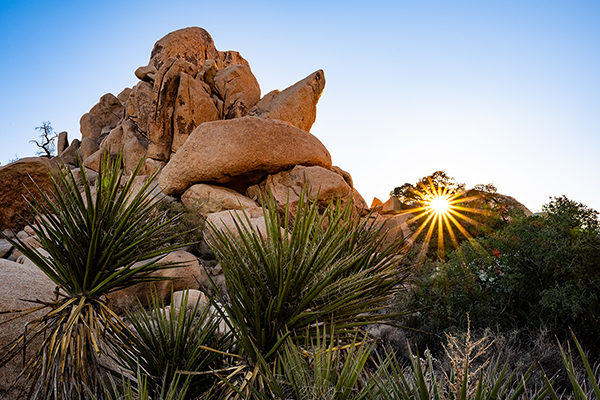
24-70mm (36mm), F16, 1/50 sec., ISO 160
Click image to view larger
To see more of Dino Sokocevic’s work, check out his website and Instagram.
Is your Tamron News subscription up to date? Click to subscribe to all editions of Tamron News featuring how-to tips, new product news, contest announcements and inspiration!
More Photo Tips | Watch Videos | Learn More About Tamron Lenses | Photo Gallery
